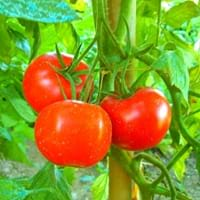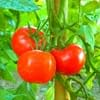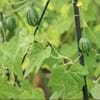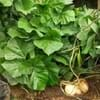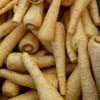Life Span
Annual and Perennial
Perennial
Type
Vegetable
Bulb or Corm or Tuber
Origin
Mexico, Central America, South America
Southern Africa, South Africa
Types
Cherry tomato, Beefsteak tomato, Medium tomato
Cusick's camas, large camas
Number of Varieties
Not Available
Habitat
Loamy soils
meadows, moist forests, Open Plains
USDA Hardiness Zone
11-15
8-10
AHS Heat Zone
12-1
Not Available
Sunset Zone
A1, A2, A3, H1, H2, 1a, 1b, 2a, 2b, 3a, 3b, 4, 5, 6, 7, 8, 9, 10, 11, 12, 13, 14, 15, 16, 17, 18, 19, 20, 21, 22, 23, 24
21,22
Habit
Vining/Climbing
Rosette/Stemless
Flower Color
Yellow
White, Yellow, Red, Blue, Purple, Pink, Lavender, Violet
Flower Color Modifier
Bicolor
Bicolor
Fruit Color
Red, Orange Red
Not Available
Leaf Color in Spring
Green, Dark Green
Green
Leaf Color in Summer
Green, Dark Green
Light Green
Leaf Color in Fall
Green, Dark Green
Several shades of Green
Leaf Color in Winter
Green, Dark Green
Light Green
Leaf Shape
Bell Shaped
Long slender
Plant Season
Spring, Summer, Fall
Spring, Winter
Sunlight
Full Sun
Full Sun, Partial Sun
Type of Soil
Loam, Sand
Loam
The pH of Soil
Neutral
Acidic, Neutral
Soil Drainage
Well drained
Well drained
Bloom Time
Indeterminate
Early Spring, Spring, Late Winter, Indeterminate
Tolerances
Drought
Black Walnut Toxicity, Rabbit, Shade areas
Where to Plant?
Container, Ground, Pot
Container, Ground, Pot
How to Plant?
Seedlings, Transplanting
chipping, Offsets, scooping, Twin scaling, Vegetative
Plant Maintenance
Medium
Low
Watering Requirements
Average Water Needs
Medium
In Summer
Lots of watering
Lots of watering
In Spring
Moderate
Moderate
In Winter
Average Water
Average Water
Soil pH
Neutral
Acidic, Neutral
Soil Type
Loam, Sand
Loam
Soil Drainage Capacity
Well drained
Well drained
Sun Exposure
Full Sun
Full Sun, Partial Sun
Pruning
Remove damaged leaves, Remove dead branches, Remove dead leaves, Remove short branches, Remove short twigs
Remove damaged leaves, Remove dead branches, Remove dead leaves
Fertilizers
Apply 5-10-5 amounts
All-Purpose Liquid Fertilizer, General garden fertilizer, Time release fertilizer
Pests and Diseases
Red blotch
Pests and diseases free
Plant Tolerance
Drought
Black Walnut Toxicity, Rabbit, Shade areas
Flower Petal Number
Single
Single, Double, Semi-Double
Fragrant Bark/Stem
Yes
No
Foliage Texture
Medium
Medium
Foliage Sheen
Matte
Glossy
Attracts
Butterflies
Insects
Allergy
Itchiness, Nausea, Runny nose, sneezing, Vomiting
Asthma
Aesthetic Uses
Not Used For Aesthetic Purpose
Bouquets, Cottage Garden
Beauty Benefits
Not Available
For treating wrinkles, Remove blemishes, Skin Problems
Edible Uses
Yes
Sometimes
Environmental Uses
Air purification
Air purification, Forms dense stands, Very little waste
Medicinal Uses
Not Available
Leucoderma, Urinary problems
Part of Plant Used
Fruits
Bulbs, Root
Other Uses
Canning, Sauces
Animal Feed, Decoration Purposes, Showy Purposes
Used As Indoor Plant
Insignificant
Yes
Used As Outdoor Plant
Yes
Yes
Garden Design
Container, Edible, Herb, Vegetable
Bedding Plant, Container, Cutflower, Mixed Border, Rock Garden / Wall
Botanical Name
LYCOPERSICON esculentum 'Stupice'
Hyacinthus orientalis
Common Name
Stupice Tomato
Hyacinth, common hyacinth, garden hyacinth, dutch hyacinth
In German
Stupice Tomato
Hyazinthe
In French
Stupice Tomato
jacinthe
In Spanish
Stupice tomate
jacinto
In Greek
Stupice Ντομάτα
υάκινθος
In Portuguese
Stupice tomate
jacinto
In Polish
Stupice Tomato
hiacynt
In Latin
Nullam Stupice
et hyacinthinas,
Phylum
Anthophyta
Magnoliophyta
Class
Magnoliopsida
Liliopsida
Family
Solanaceae
Liliaceae
Clade
Angiosperms, Asterids, Eudicots
Angiosperms, Monocots
Tribe
Not Available
Not Available
Subfamily
Not Available
Scilloideae
Properties of Stupice Tomato and Wild Hyacinth
Wondering what are the properties of Stupice Tomato and Wild Hyacinth? We provide you with everything About Stupice Tomato and Wild Hyacinth. Stupice Tomato doesn't have thorns and Wild Hyacinth doesn't have thorns. Also Stupice Tomato does not have fragrant flowers. Stupice Tomato has allergic reactions like Itchiness, Nausea, Runny nose, sneezing and Vomiting and Wild Hyacinth has allergic reactions like Itchiness, Nausea, Runny nose, sneezing and Vomiting. Compare all the properties and characteristics of these two plants. Find out which of these plant can be used as indoor plant. If you are interested to decorate your house and garden, find out aesthetic uses, compare them and select the plant which will beautify your surrounding. Along with beautification, try comparing medicinal and edible uses of Stupice Tomato and Wild Hyacinth and you can choose the plant having best and most benefits.
Season and Care of Stupice Tomato and Wild Hyacinth
Season and care of Stupice Tomato and Wild Hyacinth is important to know. While considering everything about Stupice Tomato and Wild Hyacinth Care, growing season is an essential factor. Stupice Tomato season is Spring, Summer and Fall and Wild Hyacinth season is Spring, Summer and Fall. The type of soil for Stupice Tomato is Loam, Sand and for Wild Hyacinth is Loam while the PH of soil for Stupice Tomato is Neutral and for Wild Hyacinth is Acidic, Neutral.
Stupice Tomato and Wild Hyacinth Physical Information
Stupice Tomato and Wild Hyacinth physical information is very important for comparison. Stupice Tomato height is 90.00 cm and width 60.00 cm whereas Wild Hyacinth height is 10.20 cm and width 5.10 cm. The color specification of Stupice Tomato and Wild Hyacinth are as follows:
Stupice Tomato flower color: Yellow
Stupice Tomato leaf color: Green and Dark Green
Wild Hyacinth flower color: White, Yellow, Red, Blue, Purple, Pink, Lavender and Violet
- Wild Hyacinth leaf color: Green
Care of Stupice Tomato and Wild Hyacinth
Care of Stupice Tomato and Wild Hyacinth include pruning, fertilizers, watering etc. Stupice Tomato pruning is done Remove damaged leaves, Remove dead branches, Remove dead leaves, Remove short branches and Remove short twigs and Wild Hyacinth pruning is done Remove damaged leaves, Remove dead branches and Remove dead leaves. In summer Stupice Tomato needs Lots of watering and in winter, it needs Average Water. Whereas, in summer Wild Hyacinth needs Lots of watering and in winter, it needs Average Water.
